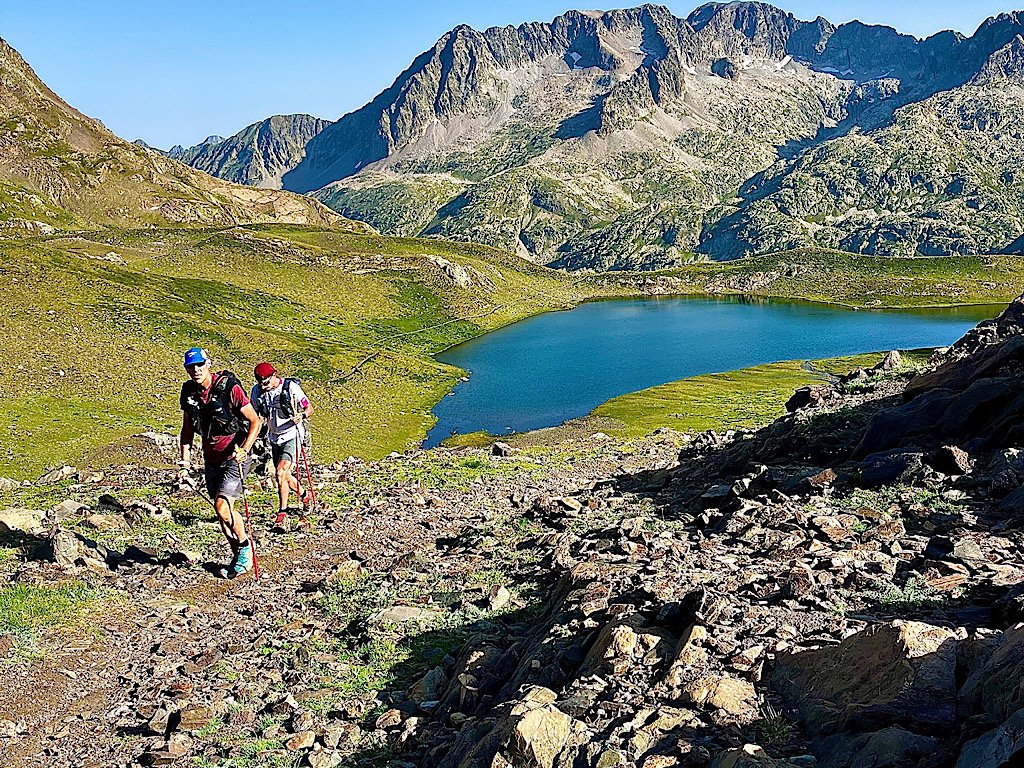Packing a trail running backpack for 2 to 4 days requires planning and organization to ensure you have everything you need without carrying unnecessary weight. Below, I'll explain. How to distribute and organize items so that your adventure is comfortable and safe and don't ruin your experience ahead of time.
Backpack Selection
Opt for a specific trail running backpack (you'll have to run with it all the time) of about 20-22 liters, which offers good load capacity, comfortable fit and several compartments to make it easier to organize all the gear you'll need to carry. It should have an integrated hydration system, such as a hydration bladder that attaches to the back of the backpack or front pockets for 500ml soft flasks or bottles. It's very important to have access to the water and food you'll be consuming without having to remove your backpack while you're on the move.
Equipment List
For a 2-4 day trip, these are the essential items you should bring:
Sheet bag: Lightweight and compact, ideal for use in shelters or hostels.
Change of clothes: Underwear (several changes), technical t-shirts, shorts and long pants, spare socks, depending on the number of days you are going and how much you want to wash.
Warm jacket: Preferably made of insulating and lightweight material.
Toiletries: Toothbrush and toothpaste, biodegradable soap, small microfiber towel, sunscreen.
Raincoat:Waterproof and lightweight, easy to pack.
Bag with food: Energy snacks, bars, gels…
Flip flops: To rest your feet at the end of the day.
Optional Material
Kit: Bandages, antiseptic, painkillers, band-aids (usually carried by the guide)
Battery: Power bank to keep your devices charged.
MORE INFO IN OUR ARTICLE
Weight Distribution and Organization
Part 1-Bottom of the Backpack

Place the bulkiest items that you will need less frequently at the bottom of your backpack:
• Bag with change of clothes
• Sheet bag
• Warm jacket
Part 2 - Center to Back
Here are the heaviest items that you might need at some point during the day:
• Bag with food: Depending on the volume, it can go in the middle to balance the weight
• Battery (Power bank): In a secure and accessible pocket.
Part 3- Center to the outside
Here are the medium weight ones that you may also need throughout the day
• Toiletries: Necessary in the morning and at night.
• Raincoat: To have on hand in case of rain.
• Kit: It should always be accessible for emergencies.
Part 4- The Top
Light and frequently accessed items should be at the top:
• Wet wipes, Kleenex, garbage bag
• Buff, gloves, sunscreen
External Pockets and Compartments
Use the exterior pockets for items you need to have closer at hand:
• Water bottles: In the front pockets or in a hydration compartment.
• Gels and bars for the first hours
• Buff, gloves
• Mobile
Other tips of interest to you
1. Balanced Distribution: Make sure to balance the weight evenly for do not overload one side of your body. A good adjusting the straps of the backpack is crucial for comfort and efficiency in trail running.
2. Minimize Weight: Take only the essentials and opt for light versions of each item. For example, a microfiber towel is lighter and more compact than a conventional towel.
3. Test your Backpack: Before the trip, take a test with a fully loaded backpack to properly adjust the straps and ensure you can run comfortably with the weight.
4. Everything protected from moisture. It's not just about the rain, but also the sweat... ideally, you'll need a waterproof bag for all your clothes and some zip-top bags for other things (think about bringing one for the trash).
Tips: I place my flip-flops on the inside sides, one on each side to give the backpack structure and also to keep them handy. It's also very easy to place them at any time, even if you've already packed the backpack.
Packing a trail running backpack for a multi-stage trip involves carefully selecting your gear and organizing it so it's accessible and distributes weight evenly. By following these tips, you can enjoy your adventure with everything you need within easy reach and without carrying excessive weight.
And you know, if you're up for it, ALTATREK organizes multi-day trips where you can put into practice all the tips we just gave you. You can find us at www.alta-trek.com



